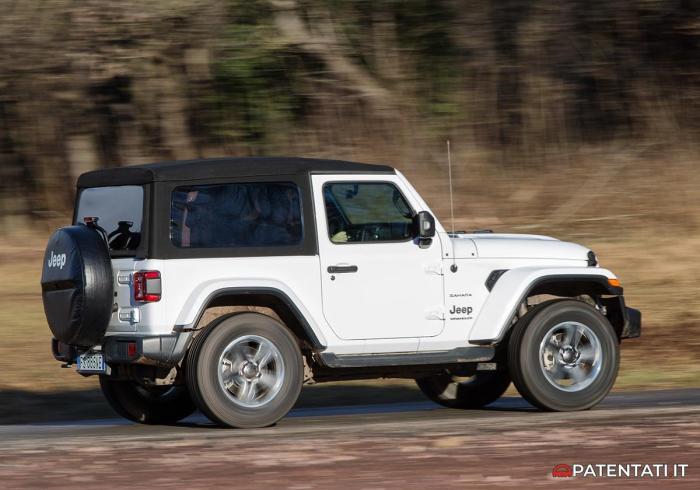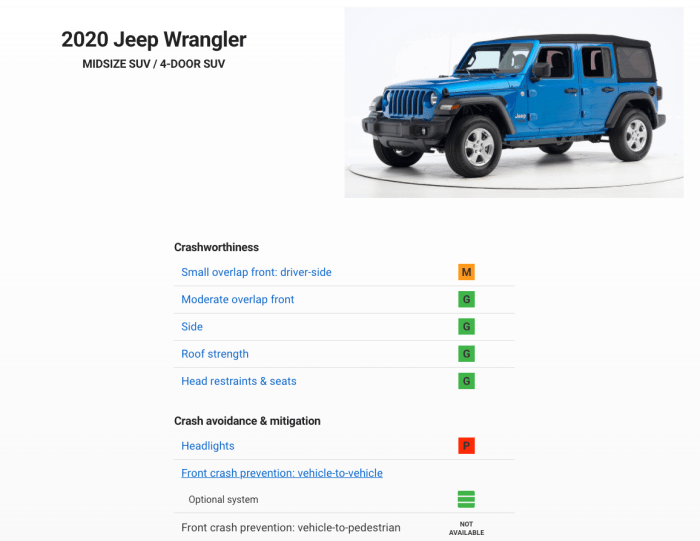Jeep exam 22 4wd systems – Embark on an exhilarating journey into the realm of Jeep Exam 22: 4WD Systems, where we delve into the intricacies of these off-road powerhouses. Jeep’s renowned 4WD capabilities are not just for show; they empower drivers to conquer challenging terrains with confidence and control.
Our comprehensive guide will unveil the inner workings of Jeep’s 4WD systems, exploring their components, modes of operation, and the advantages they offer. By the end of this exploration, you’ll possess a thorough understanding of how 4WD systems enhance Jeep’s performance and safety, making you a more informed and capable off-road enthusiast.
4WD System Overview
Four-wheel drive (4WD) systems are an essential feature for Jeep vehicles, enabling them to conquer a wide range of terrains and road conditions. These systems provide enhanced traction and stability, allowing Jeep owners to navigate off-road trails, slippery surfaces, and challenging weather conditions with confidence.
Jeep offers a variety of 4WD systems to meet the specific needs of different models and drivers. These systems range from part-time 4WD, which is ideal for occasional off-road use, to full-time 4WD, which provides constant all-wheel drive for maximum traction in all conditions.
Types of 4WD Systems
- Part-Time 4WD:Part-time 4WD systems are designed for vehicles that primarily operate on paved roads but require occasional off-road capability. These systems allow drivers to manually engage 4WD when needed, such as when encountering slippery surfaces or light off-road trails.
- Full-Time 4WD:Full-time 4WD systems provide constant all-wheel drive, regardless of road conditions. These systems are ideal for vehicles that frequently encounter challenging terrain or severe weather conditions. Full-time 4WD systems offer superior traction and stability, making them a popular choice for serious off-road enthusiasts.
- Selectable 4WD:Selectable 4WD systems offer the best of both worlds, combining the convenience of part-time 4WD with the performance of full-time 4WD. These systems allow drivers to choose between 2WD, 4WD High, and 4WD Low, providing optimal traction for a variety of driving conditions.
Jeep 4WD System Components

Jeep 4WD systems are renowned for their off-road capabilities, enabling drivers to navigate challenging terrain with confidence. At the heart of these systems lie a complex interplay of components that work together seamlessly to distribute power and torque to all four wheels.
Transfer Cases
Transfer cases are the central hubs of Jeep 4WD systems, responsible for transferring power from the transmission to the front and rear axles. They typically feature multiple modes, including 2WD (two-wheel drive), 4WD High (for slippery surfaces), and 4WD Low (for extreme off-road conditions).
The transfer case engages the appropriate drive mode by shifting gears, redirecting power to the desired axles.
Differentials
Differentials are essential components located within the axles. Their primary function is to allow the wheels on each axle to rotate at different speeds while maintaining equal torque. This is crucial when cornering or driving on uneven terrain, preventing the wheels from locking up and causing loss of traction.
Jeep Exam 22 4WD systems are a great way to get around in rough terrain. But if you’re not sure whether radon is a scare tactic, you might want to read this article . It will give you all the information you need to make an informed decision about whether or not to get a radon test.
Jeep Exam 22 4WD systems are a great way to get around in rough terrain, but they’re not the only way.
Axles
Axles are sturdy components that connect the wheels to the differentials. They are responsible for transmitting power and torque from the transfer case to the wheels, enabling them to drive the vehicle forward or backward. Jeep 4WD systems typically feature solid axles, known for their durability and off-road prowess.
Engagement and Operation

Jeep 4WD systems are typically engaged and disengaged through a dedicated lever or switch located in the vehicle’s interior. The specific mechanism may vary depending on the model and year of the Jeep.
Once engaged, the 4WD system provides increased traction and control in challenging off-road conditions. However, it’s important to understand the different modes of operation available and when to use each one effectively.
Modes of Operation
Jeep 4WD systems typically offer three main modes of operation:
- 2WD (Two-Wheel Drive):In this mode, power is delivered only to the rear wheels. This is the most fuel-efficient mode and is suitable for normal driving conditions on paved roads.
- 4WD High (Four-Wheel Drive High):This mode engages all four wheels, providing increased traction and control on slippery or uneven surfaces. It is suitable for off-road driving at moderate speeds.
- 4WD Low (Four-Wheel Drive Low):This mode engages all four wheels and reduces the gear ratio, providing maximum torque and traction. It is designed for low-speed, heavy-duty off-roading, such as climbing steep hills or navigating through deep mud.
When to Use Each Mode
The choice of which 4WD mode to use depends on the driving conditions:
- 2WD:Use this mode for normal driving on paved roads to maximize fuel efficiency.
- 4WD High:Engage this mode when driving on slippery or uneven surfaces, such as wet or icy roads, gravel, or snow. It provides increased traction and control without sacrificing too much fuel economy.
- 4WD Low:Reserve this mode for challenging off-road conditions, such as steep hills, deep mud, or rocky terrain. It provides maximum torque and traction but significantly reduces fuel efficiency.
Advantages and Disadvantages

Four-wheel drive (4WD) systems offer both advantages and disadvantages in Jeep vehicles.
Advantages
- Enhanced traction:4WD engages all four wheels, providing increased traction in slippery or off-road conditions, such as snow, mud, and rocky terrain.
- Improved stability:By distributing power evenly across all four wheels, 4WD enhances vehicle stability, reducing the risk of slipping or losing control.
- Increased ground clearance:Jeep 4WD vehicles often feature higher ground clearance, allowing them to navigate obstacles and rough terrain more easily.
- Off-road capability:4WD systems are essential for off-road enthusiasts, enabling them to explore rugged trails and conquer challenging terrain.
Disadvantages, Jeep exam 22 4wd systems
- Reduced fuel efficiency:Engaging 4WD increases rolling resistance, resulting in a decrease in fuel economy compared to two-wheel drive.
- Increased maintenance costs:4WD systems require regular maintenance, including fluid changes and component inspections, which can add to the overall cost of ownership.
- Added weight:4WD components add weight to the vehicle, which can affect handling and performance in certain situations.
- Limited use:4WD is primarily intended for off-road use or slippery conditions. Engaging 4WD on dry pavement can cause excessive wear and tear on the drivetrain.
Maintenance and Troubleshooting

Proper maintenance and care are crucial for ensuring the optimal performance and longevity of your Jeep’s 4WD system. Regular inspections, timely fluid changes, and appropriate lubrication can prevent potential issues and extend the lifespan of your 4WD components.
Common Issues and Troubleshooting
Despite proper maintenance, issues can occasionally arise within 4WD systems. Some common problems include:
Difficulty engaging or disengaging 4WD
This can be caused by worn or damaged shift linkages, faulty electrical connections, or issues with the transfer case itself.
Noises or vibrations during 4WD operation
These can indicate worn or damaged gears, bearings, or driveline components.
Fluid leaks
Leaks from the transfer case, differentials, or axles can signal issues with seals, gaskets, or fluid levels.Troubleshooting these issues involves identifying the source of the problem through a process of elimination. Checking fluid levels, inspecting components for wear or damage, and testing electrical connections can help narrow down the potential causes.
Consulting with a qualified mechanic or referring to the vehicle’s service manual is recommended for more complex troubleshooting or repairs.
FAQ: Jeep Exam 22 4wd Systems
What is the primary purpose of 4WD systems in Jeep vehicles?
4WD systems in Jeeps provide enhanced traction and control in off-road conditions, allowing drivers to navigate rough terrain, slippery surfaces, and steep inclines with greater ease and safety.
How many types of 4WD systems are available in Jeep models?
Jeep offers various types of 4WD systems, including Command-Trac, Selec-Trac, and Quadra-Trac, each tailored to specific off-road requirements and vehicle models.
What are the key components of a Jeep 4WD system?
Jeep 4WD systems comprise several critical components, including the transfer case, differentials, axles, driveshafts, and electronic controls, all working in harmony to distribute power to the wheels and enhance traction.
What are the advantages of using 4WD systems in Jeep vehicles?
4WD systems in Jeeps offer numerous advantages, such as improved traction on slippery or uneven surfaces, enhanced stability and control in off-road conditions, increased towing and hauling capabilities, and greater peace of mind when venturing into challenging terrains.
What are some common troubleshooting tips for Jeep 4WD systems?
If you encounter issues with your Jeep’s 4WD system, some common troubleshooting tips include checking fluid levels, inspecting for leaks, ensuring proper engagement and disengagement of 4WD, and seeking professional assistance for more complex problems.